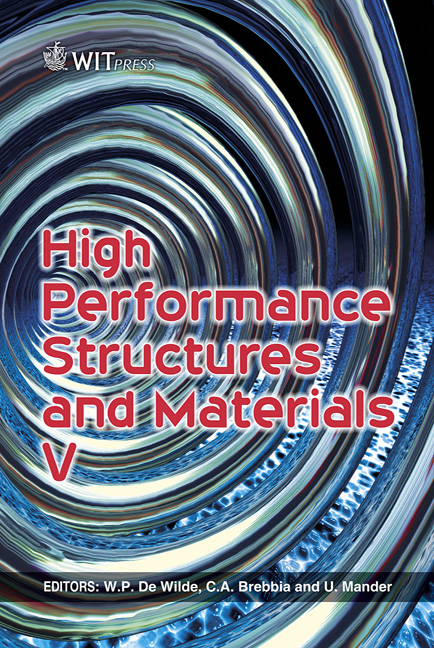Novel Method For Manufacturing Of Aerocellulose
Price
Free (open access)
Transaction
Volume
112
Pages
6
Page Range
63 - 68
Published
2010
Size
4,093 kb
Paper DOI
10.2495/HPSM100061
Copyright
WIT Press
Author(s)
D. M. Rein & Y. Cohen
Abstract
The suggested novel method for producing the aerocellulose allows the elimination of cellulose hydrogel collapse at oven drying, caused by capillary forces. The addition of a compatible reactive agent (trimethylchlorosilane) and its diffusion into the water-swollen cellulose hydrogel pores results in a reaction with water, forming a leaving compound (hydrochloric acid) and a remaining hydrophobic compound (hexamethyldisiloxane), which fills the initially hydrophilic cellulose hydrogel pores, replacing and removing the remaining water. The cellulose gel pores, filled by hexamethyldisiloxane, have a low intrinsic surface tension thus allowing minimal shrinkage during very cheap oven drying. All known processes for manufacturing the aerocellulose do not allow its production at a reasonable cost. Keywords: cellulose, hydrogel drying, aerocellulose. 1 Introduction Plastics manufacturing processes utilize about 7-8% of the global use of crude oil. However, as oil resources are depleted, it is logical to seek other sources of sustainable and renewable polymers. Cellulose is by far the most abundant polymer on earth, constituting around 70% of the total biomass; it is chemically stable, insoluble in common liquids and does not thermally degrade below about 200°C in air. Furthermore, cellulose readily biodegrades and integrates in a closed carbon life cycle. Aerogels are a class of materials, which are characterised by their highly porous structure and their low solids content. They are obtained from wet gels by drying, largely maintaining the openness of the structure. If the structure
Keywords
cellulose, hydrogel drying, aerocellulose





